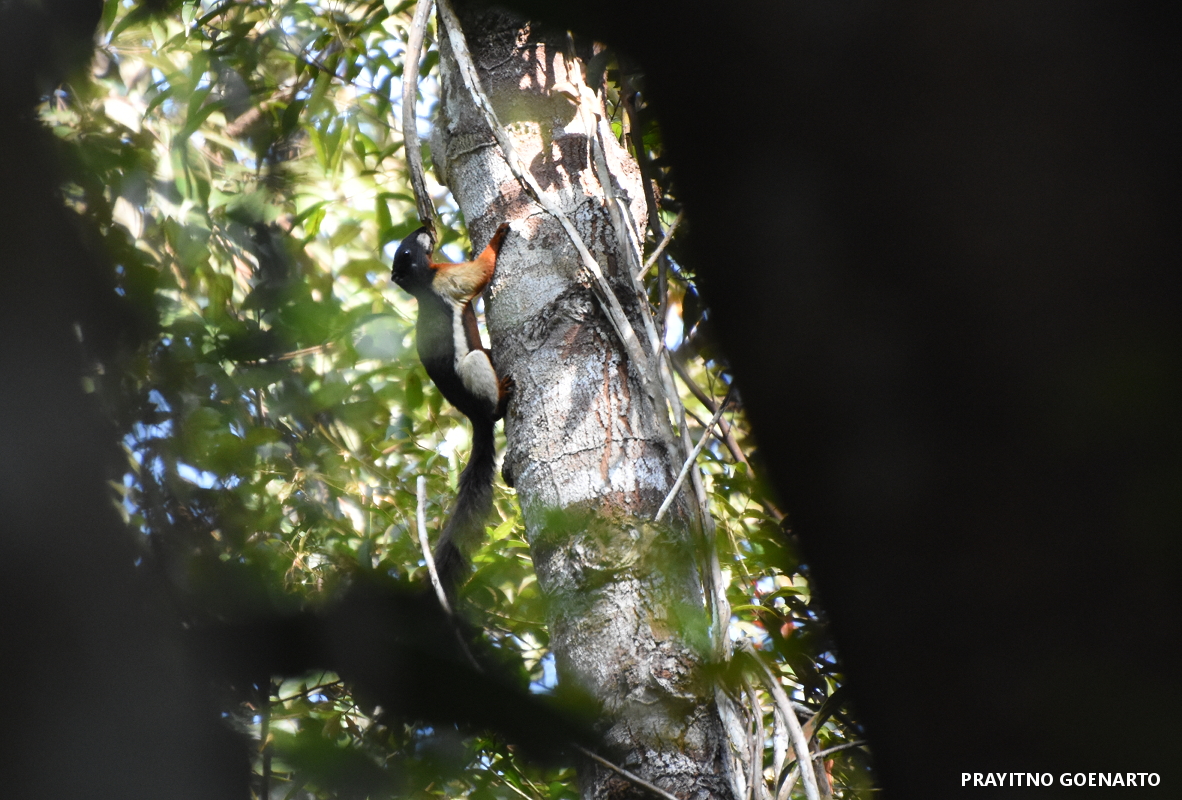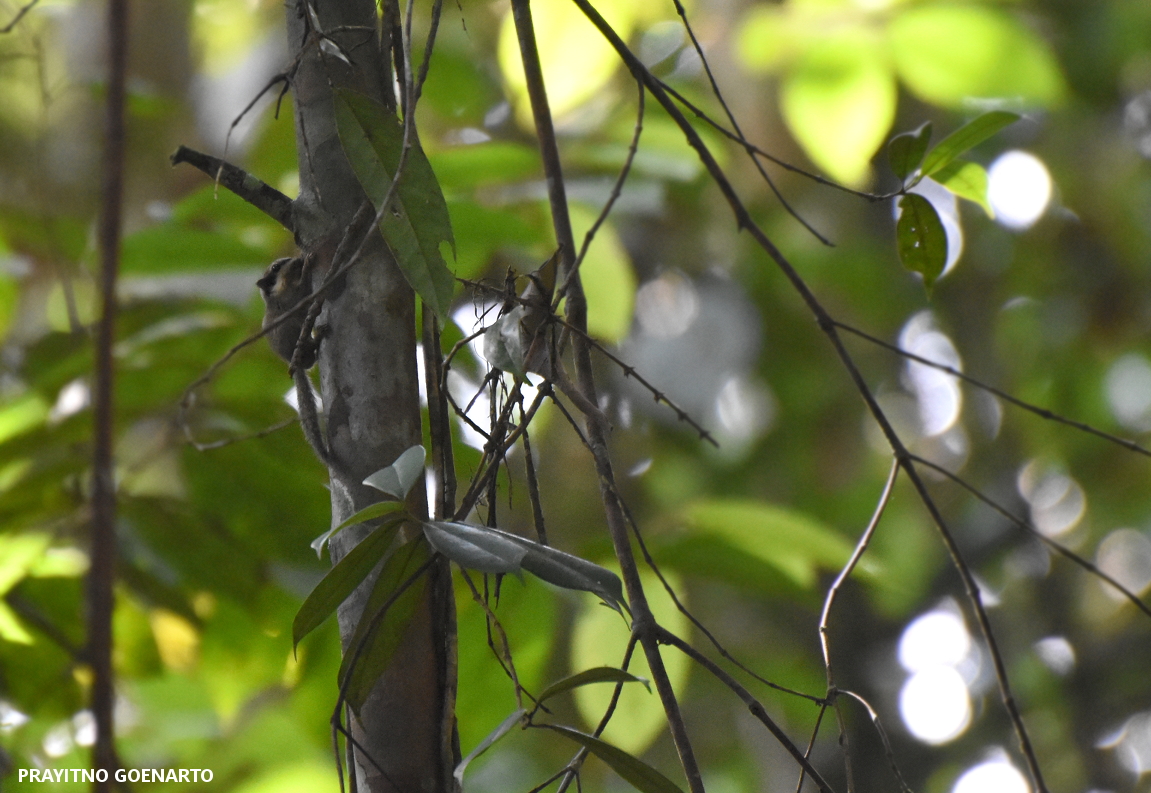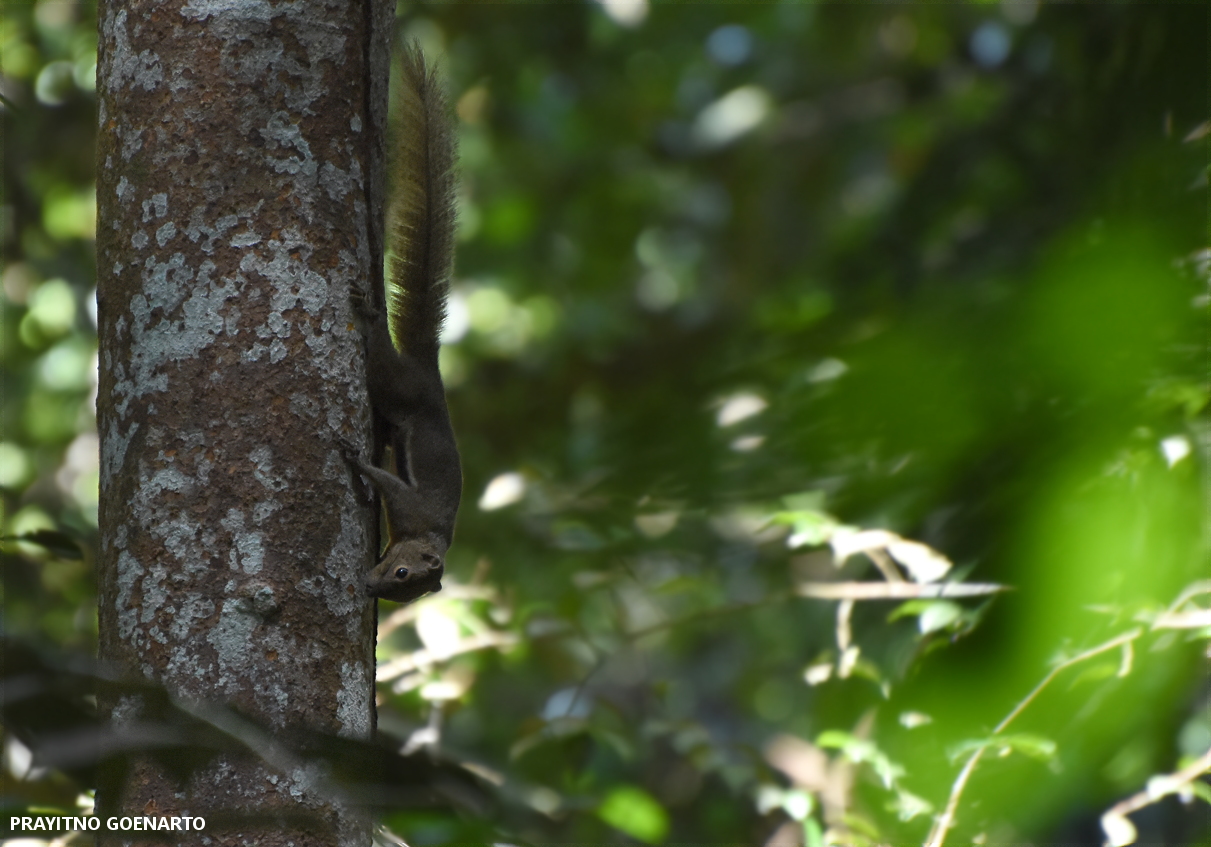September 10, 2021
Have you ever seen a squirrel before? Well, if you have, you may found it’s easy to adore this little creature. Not only are they fun to watch as they run and leap from tree to tree, but these squirrels also have important ecological roles, especially in forest ecosystems.
Restorasi Ekosistem Riau (RER) is home to not only one, but 13 species of squirrels, which belong to the family Sciuridae. It’s hard not to love squirrels when you can meet so many of them in one location.

Squirrels of RER
According to the Mammals of the Kampar Peninsula, these species of squirrels have been spotted on the Kampar Peninsula.
Red Giant Flying Squirrel
(Petaurista petaurista)
This is among the largest flying squirrels in the world, measuring up to 55 cm with a tail as long as 63cm. At up to 3.2 in weight, it is the largest flying squirrel in Sumatra.
Grey-Headed Flying Squirrel
(Petaurista elegans)
The Grey-headed flying squirrel is not as big as its red cousin, at up to 40cm in length, but it is stillone of the largest species of flying squirrels. Like other flying squirrels, it is nocturnal and able to glide long distances between trees by spreading out its patagium or skin between its limbs. The Grey-headed flying squirrel is protected under Indonesian law.
Javanese Flying Squirrel
(Iomys horsfieldii)
Javanese Flying Squirrels are limited to southern Asia, stretching from the Malayan Peninsula to Sumatra, Java, and Kalimantan. Javanese flying squirrels are mostly orange-brown to brown-gray with a slightly brighter shade. This species is quite uncommon, and also protected under Indonesian law.
Pale Giant Squirrel
(Ratufa affinis)
Also known as Cream-colored Giant squirrel, a large tree squirrel which is a native to Thai-Malay Peninsula, Kalimantan, Sumatra and nearby small islands. According to IUCN conservation status, this species is categorized as Near Threatened (NT) with a decreasing trend in the global population due to habitat loss. Their weight ranges from 929 g to 1.5 kg and their body length is about 32 cm to 35 cm, excluding their tail. Their tails, which hang vertically when they are seated and extend horizontally while they are running, are longer than their bodies, ranging from 37 cm to 43 cm
Black Giant Squirrel
(Ratufa bicolor)
Also known as Malayan Giant Squirrel, this is one of the largest species of squirrels in the world. On average, an adult black giant squirrel weighs around 1 to 1.25 kg, has a head and body length from 34 to 37 cm with tail around 41 to 42 cm. R. bicolor is diurnal and arboreal, but sometimes climbs down from the forest canopy to feed on the ground. The Black Giant Squirrel rarely enters plantations or settlements since it prefers wild forests. Currently, this species is classified as Near Threatened (NT) by the IUCN.

Least Pygmy Squirrel
(Exilisciurus exilis)
Least Pygmy Squirrel is also known as the Plain Pygmy Squirrel. This plain olive-brown squirrel is endemic to forests on the Southeast Asian islands of Sumatra and Kalimantan. Together with the African Pygmy Squirrel, the Least Pygmy Squirrel is the smallest squirrel in the world, measuring 10 to 14cm and weighing 12 to 26g.
Black-Eared Squirrel
(Nannosciurus melanotis)
This tiny squirrel is found in forests in Sumatra, Java, and Kalimantan. Except for its striking whitish and black facial markings, the black-eared squirrel resembles the Least Pygmy Squirrel.
Horse-Tailed Squirrel
(Sundasciurus hippurus)
It is found throughout the islands of Sumatra and Kalimantan, as well as the half of the Malayan Peninsula. Horse-Tailed Squirrel is the most colorful and largest of the Sundasciurus tree squirrels with its medium-sized body of around 21.5 to 25 cm and a tail length of 24 to 29 cm. This squirrel has a grizzled grey head, shoulders, forefeet and body with a whitish, dull, orange, or red-brown underbelly. The tail of this squirrel is commonly a glossy black or grey banded with black. The IUCN also classifies this species as Near Threatened (NT).
Low’s Squirrel
(Sundasciurus lowii)
It inhabits lowland and forest. It usually roams the forest floor, low shrubs, and branches. However, at times, it is also arboreal. Its features include a short, thick tail, and very pale white underparts. There are seven subspecies of Sundasciurus, each with subtle external differences. This species is found in Sumatra, Kalimantan, Thailand and Malayan Peninsula.
Three-Striped Ground Squirrel
(Lariscus insignis)
The appearance of Three-Striped Ground Squirrel is not much different from the other kinds of squirrels. The upperparts and tail are deep brown to orange-brown, while the underparts are pale. As its name suggests, this species is easily identified by three thick, black stripes which extend from the shoulders to the base of the tail. Three-Striped Ground Squirrel is fully terrestrial, which means that it mainly lives on the land rather than in the water or trees. Therefore, this species never ventures more than one metre above the ground. This species is protected under Indonesian law.

Ecosystem Roles
Not only cute, squirrels are important sources of prey for a vast array of predators including many that are threatened or endangered. Tree and flying squirrels are also essential in the regeneration of forests around the world through their seed dispersal activities. Squirrels are also important in dispersing spores of the mushroom they eat, including ecologically important underground endorhyzal mushroom.
These 10 species of squirrels were recorded and identified on the Kampar Peninsula and described in mammals of the Kampar Peninsula. The publication itself is important to protect squirrels and other species on the Kampar Peninsula and in RER.
The reason why it is important is because these squirrel experience a lot of potential threats that reduce their presence in the wild. The majority of squirrel species in Indonesia are classified as Near Threatened (NT) by the IUCN and protected under Indonesian law.
Some of the potential threats are poaching and pet trade. The large-scale decline in the squirrels’ number could disrupt ecosystems, so more attention is needed to maintain the squirrel population in Indonesia.